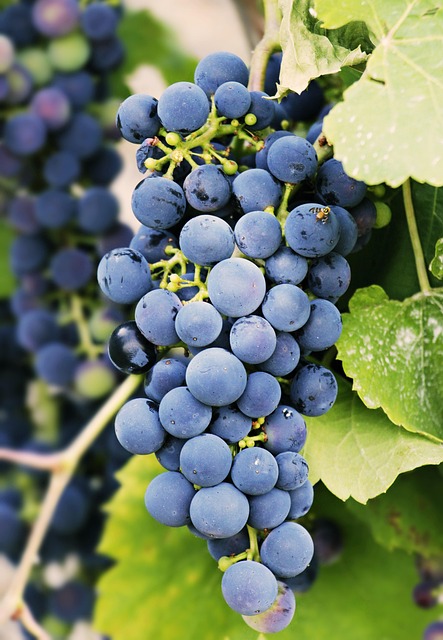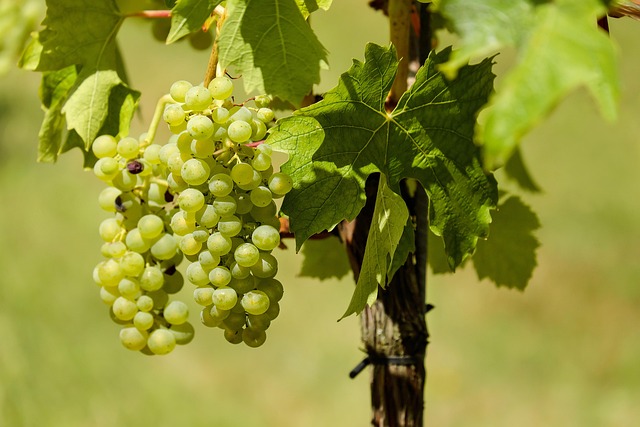
Category: Farmers Markets in Lane County Oregon
Farmers Markets in Lane County Oregon: A Comprehensive Analysis
Introduction
Nestled in the heart of the Pacific Northwest, Lane County Oregon boasts a vibrant and thriving farmers market scene that has captured the attention of locals and visitors alike. These markets serve as more than just places to purchase fresh produce; they are community hubs, cultural landmarks, and economic engines. This article delves into the multifaceted world of farmers markets in Lane County, exploring their historical roots, global impact, economic significance, technological innovations, regulatory framework, challenges, and promising future prospects. By examining these aspects, we aim to provide a comprehensive understanding of these dynamic entities and their role in shaping local economies and communities.
Understanding Farmers Markets in Lane County Oregon: A Definition and Historical Context
Farmers markets in Lane County are open-air or indoor gathering places where local farmers, producers, and artisans sell their goods directly to consumers. These markets operate under a set of principles that prioritize freshness, quality, and sustainability by promoting direct-to-consumer sales, reducing transportation costs, and supporting local agriculture. Historically, farmers markets have served as vital community spaces for social interaction, cultural exchange, and economic sustenance.
In Lane County, the first organized farmers market was established in Eugene, the county seat, over two decades ago. Since then, the movement has spread to various towns and cities across the county, each with its unique character and offerings. Today, these markets not only facilitate the exchange of goods but also foster a sense of regional identity and pride in local food systems.
Global Impact and Trends
The farmers market phenomenon is far from confined to Lane County; it has resonated worldwide, sparking similar initiatives in cities from Tokyo to Toronto. This global trend reflects a growing consumer demand for fresh, locally sourced produce and a desire to support sustainable agricultural practices. According to the International Farm Direct Marketing Association (IFDMA), there are over 30,000 farmers markets globally, with new ones emerging at an increasing rate.
Key trends shaping the future of farmers markets include:
- Seasonal and Local Focus: Consumers are increasingly seeking out seasonal products, driving a focus on year-round availability of locally grown items.
- Diversification: Markets are evolving to offer a broader range of products, including artisanal goods, prepared foods, and specialty items.
- Technology Integration: The adoption of technology for online marketing, mobile payments, and customer engagement is gaining momentum.
- Community Engagement: Many markets are incorporating educational programs, community events, and partnerships with local schools to foster a deeper connection with the community.
Economic Considerations: Market Dynamics and Investment Patterns
Farmers markets contribute significantly to the local economy, impacting various sectors:
| Sector Impact | Description |
|---|---|
| Agriculture | Boosts local farming by providing direct access to consumers, increasing farm incomes and encouraging sustainable practices. |
| Retail | Offers fresh produce and goods at competitive prices, competing with big-box stores and specialty retailers. |
| Tourism | Attracts visitors who come for the unique shopping experience, contributing to increased tourism revenue. |
| Food Culture | Fosters a vibrant food scene by promoting local chefs, food trucks, and restaurants featuring market-fresh ingredients. |
Investment patterns in Lane County’s farmers markets have been positive, with private investors, local businesses, and community organizations collaborating to support market development. Grant programs and public-private partnerships play a crucial role in funding infrastructure improvements, marketing initiatives, and educational programs.
Technological Advancements: Digital Transformation in Farmers Markets
Technology has revolutionized the way farmers markets operate, enhance customer experiences, and expand their reach:
- Online Marketplaces: Some markets have launched online platforms allowing customers to pre-order and pay for goods, ensuring convenience and reducing crowd congestion.
- Mobile Payments: Contactless payment systems enable faster transactions, enhancing efficiency and security.
- Customer Engagement Apps: Dedicated apps provide market information, vendor locations, product highlights, and exclusive offers, improving customer navigation and loyalty.
- Social Media Marketing: Markets leverage social media to promote events, showcase vendors, and share recipes, attracting new customers and building community engagement.
These technological advancements not only improve operational efficiency but also cater to the digital-first mindset of modern consumers.
Policy and Regulation: Governance and Framework
The success of farmers markets in Lane County is underpinned by a supportive regulatory environment that balances consumer protection, public health, and economic development:
- Licensing and Permits: Vendors must obtain licenses and permits from local authorities to operate, ensuring compliance with food safety and sanitation standards.
- Zoning Regulations: Land use policies dictate the siting of markets, ensuring they are accessible and appropriately zoned for commercial activities.
- Health Department Guidelines: Strict guidelines cover food handling, preparation, and storage, maintaining high hygiene standards.
- Taxation and Business Practices: Markets operate within established tax frameworks, and vendors must adhere to business practices that promote fair competition.
These policies collectively contribute to the sustainability and longevity of farmers markets in the county.
Challenges and Criticisms: Overcoming Obstacles
Despite their many benefits, Lane County’s farmers markets face several challenges:
- Seasonality: The reliance on seasonal produce limits product availability during off-peak times.
- Vendor Competition: Attracting and retaining vendors can be competitive due to the growing popularity of direct-to-consumer sales channels.
- Infrastructure and Accessibility: Some markets struggle with limited space, parking, and accessibility for people with disabilities, requiring investments in infrastructure.
- Public Perception: Educating consumers about the value of local produce and farmers market benefits remains an ongoing challenge.
To address these issues, strategic solutions include:
- Expanding market operations to year-round locations with controlled indoor environments.
- Offering incentives and support for vendors to encourage participation throughout the year.
- Investing in infrastructure improvements and accessibility features to enhance customer experience.
- Launching public awareness campaigns highlighting the benefits of local food systems and farmers markets.
Case Studies: Successful Applications and Lessons Learned
Case Study 1: Eugene’s Saturday Market – A Historic Success
The Eugene Saturday Market, established in 1980, is one of the oldest and largest farmers markets in Lane County. Its success lies in several key factors:
- Community Engagement: The market hosts weekly events, live music, and community art displays, fostering a vibrant atmosphere that attracts visitors year-round.
- Vendor Diversity: With over 100 vendors offering fresh produce, artisanal goods, and prepared foods, the market caters to diverse consumer preferences.
- Marketing and Promotion: Effective use of social media, local radio, and partnerships with area businesses has helped increase market visibility and attract new customers.
Lessons Learned: Building a strong community connection and promoting vendor diversity are essential for maintaining year-round attendance and attracting both locals and visitors.
Case Study 2: Corvallis’ Urban Farm – A Model for Sustainability
Corvallis’ Urban Farm Market is a unique initiative that addresses food security and sustainability concerns by combining a farmers market with community gardening programs:
- Community Gardens: The market collaborates with local schools and community organizations to establish urban gardens, providing fresh produce for the market and teaching residents about sustainable agriculture.
- Educational Programs: Workshops on composting, seed saving, and kitchen skills empower participants to become more self-sufficient and environmentally conscious.
- Food Deserts Initiative: By partnering with local food banks, the market addresses food insecurity in underserved areas, ensuring access to fresh produce for all.
Lessons Learned: Integrating educational programs and community initiatives into farmers markets fosters a deeper sense of ownership and participation among residents, enhancing their long-term sustainability.
Future Prospects: Growth Areas and Emerging Trends
The future of farmers markets in Lane County looks promising, with several growth areas and emerging trends on the horizon:
- Expansion to Rural Communities: Bringing farmers markets to smaller, rural communities can address food accessibility issues and strengthen local economies.
- Year-Round Markets: Developing indoor market spaces equipped with hydroponic systems or controlled environments will enable year-round fresh produce availability.
- Technology Integration: Advanced technologies like augmented reality (AR) for product information and virtual reality (VR) for vendor tours will enhance customer experiences.
- Sustainability Initiatives: Markets will continue to emphasize sustainability by promoting organic practices, reducing packaging waste, and adopting renewable energy sources.
- Collaborative Partnerships: Increased collaboration with local schools, restaurants, and food hall concepts will expand market reach and drive consumer engagement.
Conclusion: Embracing the Future of Local Food Systems
Farmers markets in Lane County Oregon represent a thriving movement that celebrates local food systems, supports sustainable agriculture, and strengthens community bonds. Through a comprehensive analysis, this article has highlighted the historical context, global impact, economic significance, technological advancements, regulatory framework, challenges, and promising future prospects of these dynamic entities.
As consumers become increasingly conscious of food origins and environmental sustainability, farmers markets are poised to play an even more pivotal role in shaping local economies and communities. By embracing technology, fostering community engagement, and addressing challenges through innovative solutions, Lane County’s farmers markets will continue to thrive and inspire similar initiatives worldwide.
FAQ Section: Answering Common Questions
Q: What makes farmers markets unique compared to grocery stores?
A: Farmers markets offer direct access to local farmers and producers, providing fresh, often organic produce and artisanal goods at competitive prices. They also create a social atmosphere, support local businesses, and promote sustainable agricultural practices.
Q: Are there any nutritional benefits to buying from farmers markets?
A: Absolutely! Farmers market produce is typically fresher because it travels shorter distances and is often picked at peak ripeness. This freshness preserves essential nutrients. Additionally, the variety of locally grown fruits and vegetables ensures a broader range of vitamins, minerals, and antioxidants.
Q: How can I support farmers markets as a consumer?
A: You can support farmers markets by purchasing fresh produce, artisan goods, and local specialties. Consider bringing your own reusable bags and containers to reduce waste. Spread the word about market events through social media or personal recommendations, and encourage friends and family to join you at the market.
Q: Are there any educational opportunities available at Lane County’s farmers markets?
A: Yes! Many markets host educational programs, workshops, and demonstrations focusing on sustainable agriculture, cooking with local produce, food preservation, and more. Check individual market websites or social media pages for schedules and details.
Q: Can I find specialty items like artisanal cheeses or baked goods at Lane County farmers markets?
A: You bet! While the focus is primarily on fresh produce, many Lane County farmers markets feature a diverse range of vendors offering unique products like local cheeses, handcrafted soaps, baked goods, and even handmade jewelry.









